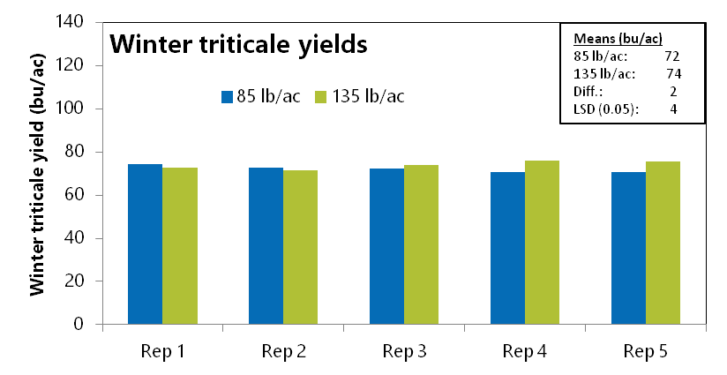RESEARCH REPORT: Winter Triticale Seeding Rate
Seeding rates of small grains are important to achieve optimal plant stands, yields and yield quality. For fall-seeded small grains like winter triticale, growers must take into account anticipated winter survival when deciding on seeding date and rate. Typically, seeding rate is increased as seeding date is delayed into the fall. An optimal plant population for fall-seeded small grains ranges between 900,000 and 1.3 million plants/ac (21–30 plants/ft2). Paul Mugge, who farms near Sutherland in O’Brien County in NW Iowa, compared two winter triticale seeding rates: 85 vs. 135 lb/ac.
The full report can be read here: Winter Triticale Seeding Rate.

Paul Mugge in his triticale field.
Paul collected stand counts from strips just before harvest in July. Final plant populations coming were 30 vs. 31 plants/ft2 for the 85 and 135 lb/ac seeding rates, respectively. These final plant populations were not significantly different (LSD = 6; P ≤ 0.05). These populations also fall within the recommended range of 21–30 plants/ft2 for fall-seeded small grains.
As with final plant populations, grain yield was not affected by seeding rate (figure below).

For more details on this trial, read the full report: Winter Triticale Seeding Rate. Support for this trial was provided by the Walton Family Foundation.
For more information about this study and other studies as part of PFI’s Cooperators’ Program, contact Stefan Gailans at stefan@practicalfarmers.org.
